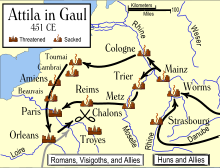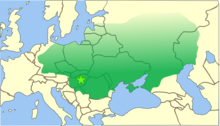Template talk:Convert to international
Perhaps this should say "contains written text" instead of "uses inside descriptions or captions in a specific script or language"? Because I don't really know what tat's supposed to mean. pfctdayelise (说什么?) 14:21, 15 November 2006 (UTC)
- It is not that each written text is a caption, description or legend and that each is language specific. E.g. scientific symbols or numbers can be written, but are (more or less) international and language neutral. --AtonX 15:01, 15 November 2006 (UTC)
- OK, but I still think it needs rewording. I think of "caption" as separate to the image, not part of it. How about "language-specific labels"? pfctdayelise (说什么?) 04:18, 16 November 2006 (UTC)
- I tried to reword the template a little. I agree, that captions should be separated from the image (from the graphics file) which is not always the case. --AtonX 11:58, 17 November 2006 (UTC)
- OK, but I still think it needs rewording. I think of "caption" as separate to the image, not part of it. How about "language-specific labels"? pfctdayelise (说什么?) 04:18, 16 November 2006 (UTC)
Is this template needed?[edit]
When applied to a map, this template simply means that that map contains words. You can't have a "language neutral" map without having a "word-free" map.
All maps should contain words, if nothing else than to label countries, cities, rivers, or any geographic feature. There are, as well, more complex maps that show changes, such as changes of elevation, borders, and rulers, or show movement (e.g. of peoples, languages, armies). MapMaster 15:25, 19 November 2006 (UTC)
- Language-neutral does not mean word-free. Certainly, maps generally contain toponymic labels. These, however, are—to a certain extent—international and make the map usable in many languages. A title in English, however, should be separated from the body of the image and moved to the description page. This would make the map usable in other languages and each user can add a caption and/or title in his own language. --AtonX 10:42, 20 November 2006 (UTC)
- This template can be used for some images with labels, in bitmap (jpg, png, gif) format. For maps this template does generally not apply. For SVG files not at all. Lycaon 16:55, 19 November 2006 (UTC)
- Thanks for the clarification. It was applied against an SVG map of mine, from which I've since removed the template. MapMaster 22:14, 19 November 2006 (UTC)



- This comment by Lycaon does not have a general validity. It is also not true, that the encouragement for language neutral images does not apply to all SVG files as a whole.--AtonX 10:42, 20 November 2006 (UTC)
- Thanks for the clarification. It was applied against an SVG map of mine, from which I've since removed the template. MapMaster 22:14, 19 November 2006 (UTC)
But many, if not most, toponymic names, to use your phrase, are language specific. Take the map at the right as an example. This map was stuck with one of these templates. How should the following features be labelled in a "language neutral" version:
- Rhine/Rhein river?
- Danube/Donau river?
- Kóln/Cologne?
- Rheims/Reims?
- Moselle/Moselle river?
- The icons for "threatened" and "sacked"?
- The scale of the map (kilometers and miles)?
There are over 2 dozen labels on the map.
Or let's look at one of Lycaon's images to which the tag was tacked on (see right). How could you explain the interaction without labelling the drawing directly?
There are some maps that do work effectively without words (see 3rd image on right), but they are very simple maps drawn over territory with which most visitors are familiar. But anything more complex requires labels on the map itself, and labels require us to choose an alphabet and a language.
My concern is that the quality of the images within Wikipedia are being degraded by this initiative. A fine example is the image discussed below. Now the user has to flicker back and forth between the image and the caption (assuming that the caption is created properly) trying to translate the numbers against the drawing, requiring additional work from the user and making the whole situation less clear.
The best textbooks, atlases, and how-to books (among others) all use images with language overlays. Wikipedia needs to have those same standards.
Certainly, this template could be useful in some situations, but spraying this all over Commons on any image with language is misguided. MapMaster 00:32, 21 November 2006 (UTC)
- What can I say? I agree. While it is fine to consider whether language/script-specific information really need to be inside the picture, very often a valid result of the consideration is that they do. --Mormegil 18:04, 30 November 2006 (UTC)
- I agree, that consideration is necessary. In my opinion, however, very often the result of such consideration is that they do not. It just sometimes takes some "out of the box" thinking. (Of course many authors are offended, that somebody takes the liberty to suggest, that they work could be improved for the sake of international/multicultural usability.) --AtonX 14:44, 1 December 2006 (UTC)
Marked images[edit]
I saw this tag at Image:Cathode ray Tube.PNG, and edited the picture. I've uploaded it as Image:Cathode ray tube - neutral.png, but now I'm not so sure - was I supposed to replace the main image? Yuval Y • Chat • 12:02, 20 November 2006 (UTC)
Template for finsished work[edit]
It could be quite nice with a standardised template indicating that there now exists a language neutral version of the image. With this more people following the original image would hopefully notice and use the new version. /Lokal_Profil 04:23, 20 December 2006 (UTC)
- Nice idea. Any drafts? :) --AtonX 11:01, 22 December 2006 (UTC)
- Non definite so far. I had envisioned something small enough to fit into the other_versions section of the {{Information}} template. Something similar to (but smaller) than {{Translation possible}} would probably work. /Lokal_Profil 01:50, 30 December 2006 (UTC)